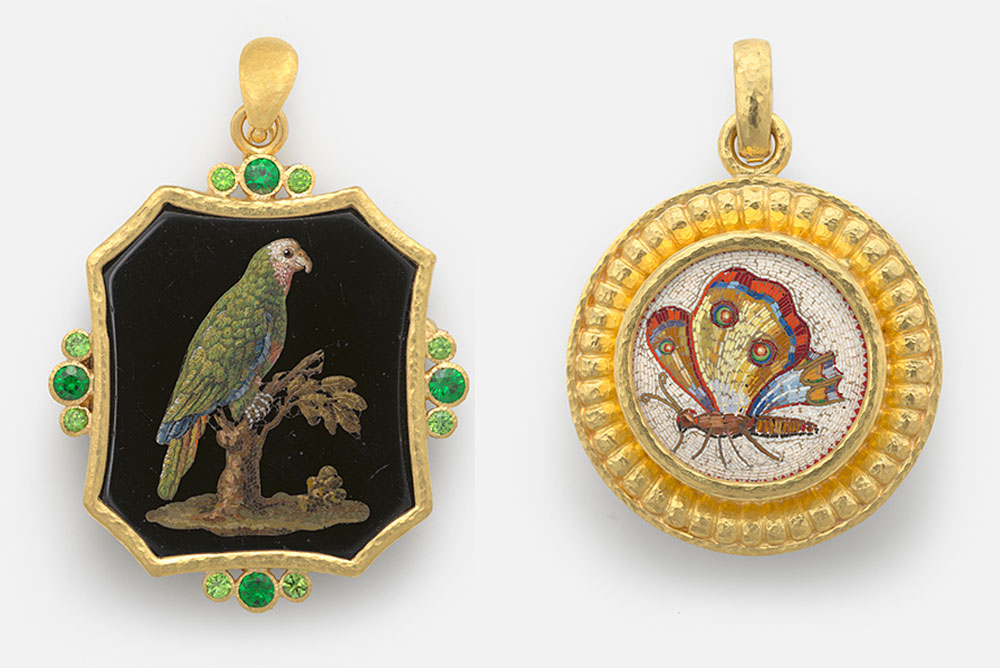
LEFT: Parrot, Rome, 19th century, micromosaic set in gold as a pendant, with four sets of 4-mm tsavorite and 2.7-mm demantoid garnets on bezel, 50 x 45 mm. / Photo by Travis Fullerton, © Virginia Museum of Fine Arts.
RIGHT: “Walking Butterfly,” 19th century, attributed to Giacomo Raffaelli (Italian, 1753–1836), micromosaic set in gold as a pendant, with gold bezel, hinged bale, 35 x 35 mm. Collection of Elizabeth Locke. / Photo by Travis Fullerton, © Virginia Museum of Fine Arts.
IT WAS THE LATE 1880s, and my great-grandfather, a veterinarian, had just died. And so his son, my grandfather, decided to leave their small city north and east of Rome and travel to London, to a new language and a new life.
If he had chanced to look around, my grandfather, not yet 20 years old, surely would have noticed a steady stream of Englishmen moving in the opposite direction, leaving London and the English countryside to experience the cultural highlights of Italy. It would have been, to be sure, a feeble shadow of the Grand Tour, the trek of fashionable young men from the 17th to the mid-19th century traveling in a predictable circuit of Italy’s antiquities as well as the merely old. But as much as my grandfather’s departure from his home was the early edge of a wave of Italian immigration, so too the Grand Tour’s itinerary was a harbinger of the age of mass foreign tourism only recently interrupted by the Covid-19 pandemic.
Whereas recent travelers to the Continent might find themselves taking home St. Peter’s Basilica refrigerator magnets or plastic likenesses of the Leaning Tower of Pisa, the earlier breed—a wealthier lot, to be sure, and usually accompanied by tutors and guides—had much finer fare to mark their travels.
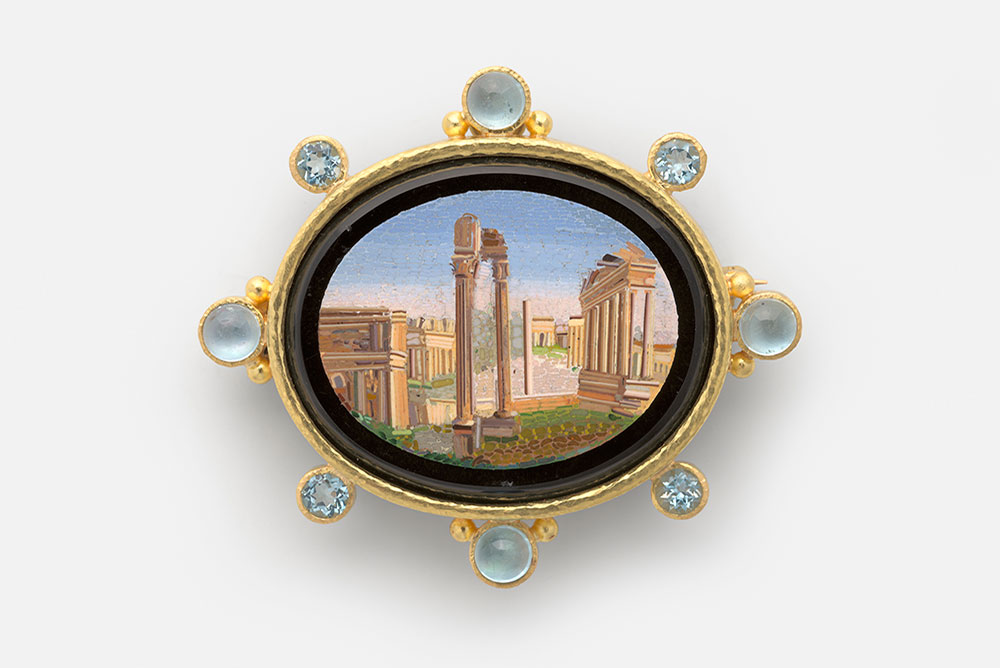
Roman Forum, Rome, 19th century, micromosaic set in gold as a brooch, with alternating 6-mm cabochon aquamarines with side gold dots and 5-mm faceted aquamarines around bezel, 54 x 62 mm. Collection of Elizabeth Locke. / Photo by Travis Fullerton, © Virginia Museum of Fine Arts.
From the Return to the Grand Tour exhibit at the Gibbes Museum of Art in Charleston, South Carolina, we learn that from the mid-18th to the late 19th century, there were more than 200 mosaicists working in Rome. And not all of those mosaics were rendered in tumbled marble as pavements and the like. Many of the artisans were producing miniaturized views of the Eternal City, its monuments and cultural touchstones, mounting their little works of art on pillboxes or medallions to be framed and collected.
Elizabeth Locke, a jeweler based in Virginia horse country, knows Italy, she knows jewelry, and she knows the cultural value of the little Grand Tour micromosaics, which she has been collecting since 1989. Collecting them is not all she does; she also frequently enhances them, mounting them in 19-karat gold and embellishing them with the neoclassical underpinnings of her jewelry line, featured at Neiman Marcus.
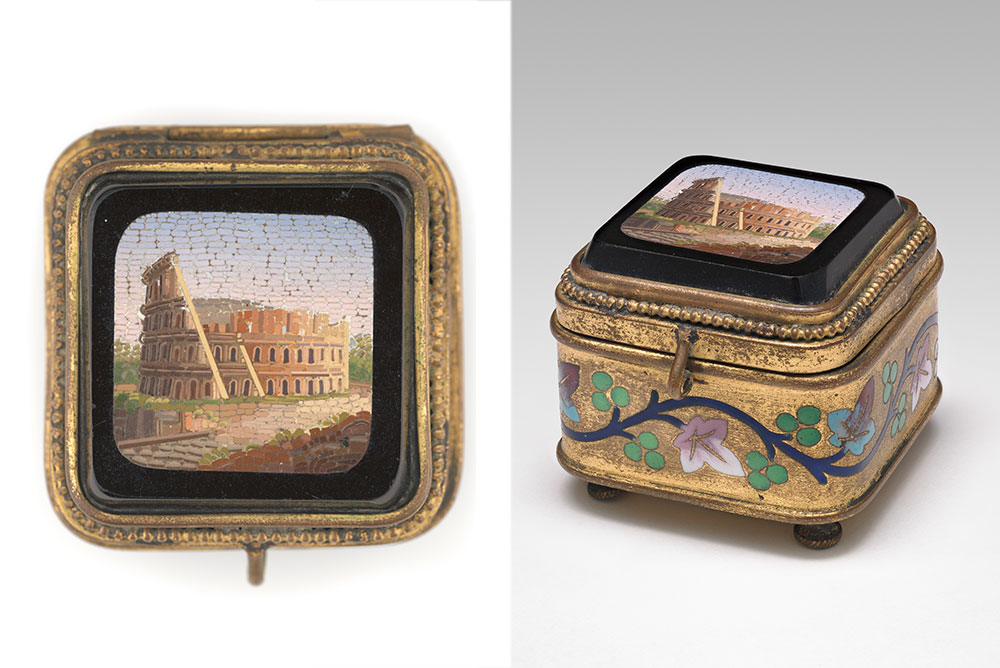
LEFT AND RIGHT (top and side views): Coliseum, Rome, 19th century, micromosaic set in metal box detailed with enamel paint, 45 x 45 x 39 mm. Collection of Elizabeth Locke. / Photo by Travis Fullerton, © Virginia Museum of Fine Arts.
Locke has more than a hundred examples of these earlier treasures, 92 of which are on display at the Gibbes. I say her jewelry style is neoclassical, and that’s true, but it also has a modernity that juxtaposes neatly with the micromosaics, giving them a fresh appeal. The modern eye can be fooled by these tiny works of art: Some are so detailed that a quick glance suggests that they’re little painted enamels.
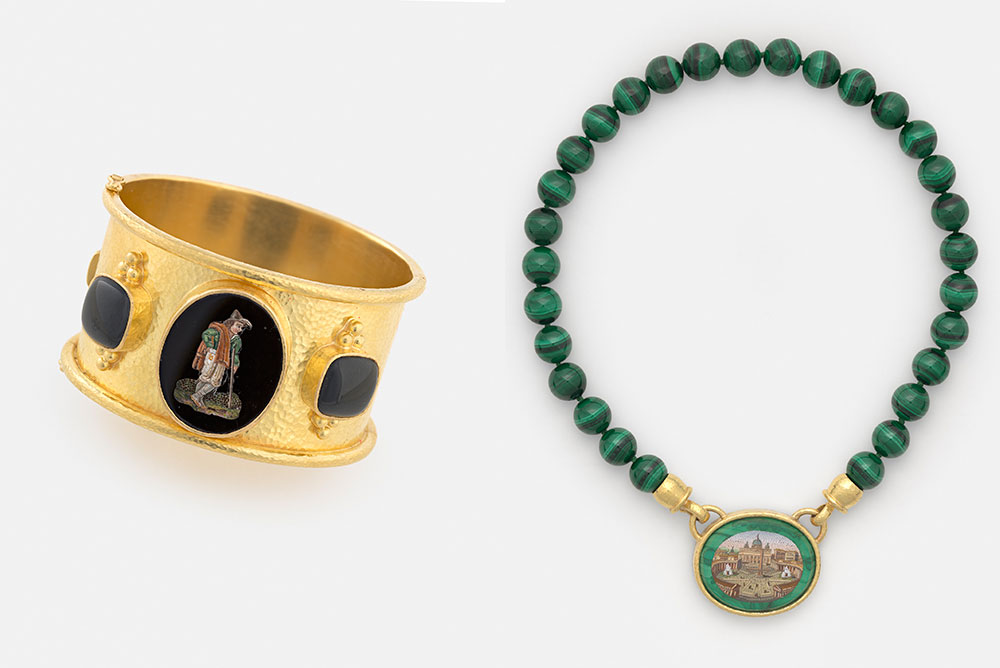
LEFT: “Peasant Man With Walking Stick,” Rome, 19th century, after etchings by Bartolomeo Pinelli (Italian, 1781–1835), micromosaic set in wide hammered gold bangle with rolled edges and side black jade cushions with gold triads, 1 3/8 x 2 ½ x 2 3/8 in. Collection of Elizabeth Locke. / Photo by Travis Fullerton, © Virginia Museum of Fine Arts.
RIGHT: St. Peter’s Square, Rome, 19th century, micromosaic set in gold as a pendant, with malachite border, suspended on 12-mm malachite bead necklace, 17 inches, 33 x 40 mm. Collection of Elizabeth Locke. / Photo by Travis Fullerton, © Virginia Museum of Fine Arts.
Given the necessities of the Covid-19 pandemic, the exhibit of Locke’s collection has been extended into next January. So if you find there’s still time for a late-summer, bust-outta-the-house road trip, you might consider making the Gibbes part of your own Grand Tour this year.
—Nancy McKeon
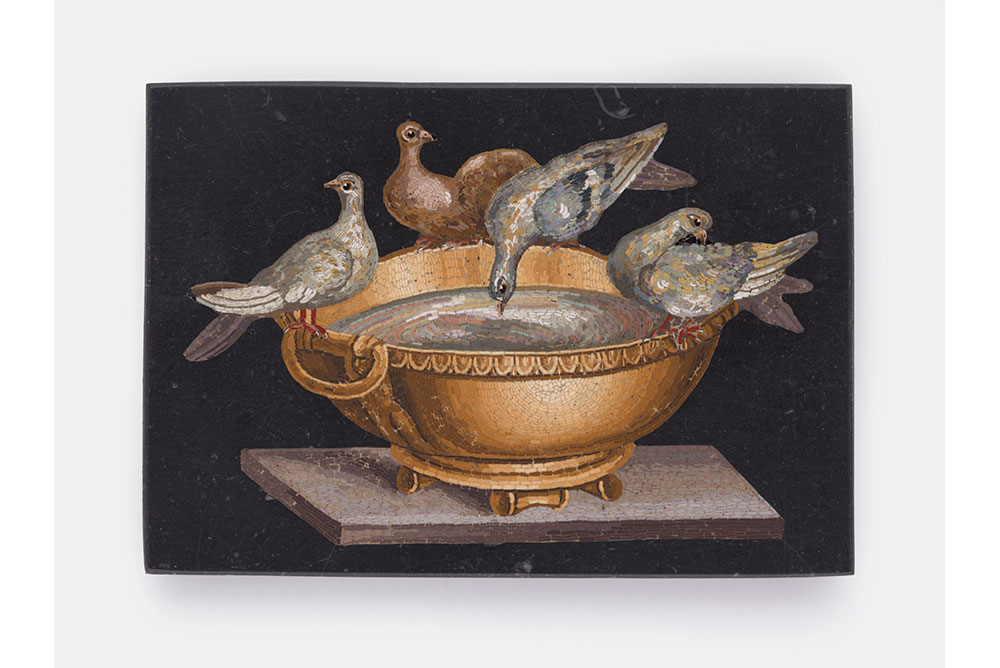
“Doves of Pliny,” 19th century, Giaocchino Barberi (Italian, 1783–1857), micromosaic set in black plaque, 54 x 78 mm. Collection of Elizabeth Locke. / Photo by Travis Fullerton, © Virginia Museum of Fine Arts.
A Return to the Grand Tour: Micromosaic Jewels From the Collection of Elizabeth Locke, The Gibbes Museum of Art, 135 Meeting Street, Charleston, South Carolina 29401; 843-722-2706; www.gibbesmuseum.org. On view through January 10, 2021.

These are exquisite.